Dante's circles
Dante Alighieri was not only a poet. He passionately
defended his political views, performed diplomatic missions
and, as a young man, even fought on the battlefield. Much of
his biography is revealed in the Divine Comedy, his magnum
opus.
The poem is set in 1300, two years before Dante’s exile from
Florence, perhaps the greatest tragedy in his life. Most of the
characters in the Comedy are not fictitious. In Hell we see
Dante’s nemesis, Pope Boniface VIII, who banished him, in
Purgatory his dearest friend, and in Paradise his beloved
Beatrice.
On your journey through the website, you will encounter 13
other real-life individuals from Dante’s world. There are two
paths that you can take: the first introduces the characters as
they appear in the Divine Comedy; the second places them in
the chronology of Dante's own life. In each case the
information is the same, only the order in which the
dramatis personae take the stage is different. To select your
path, brave pilgrim, click one of the buttons below.
Dante, the author-cum-hero of the Divine Comedy,
enters the next world in 1300 at the age of 35. His journey
commences on Good Friday (when Christ's body was
taken down from the cross). The entrance to Hell,
according to Dante, lies in the Northern Hemisphere,
beneath the city of Jerusalem. Dante's Hell consists of a
funnel of nine circles (corresponding to different sins),
descending to the center of the Earth.
The condemned souls are watched over by a variety of
beasts and monsters. Encased in ice at the very heart of
the funnel, the point farthest from God, is the
three-faced Lucifer, chewing on the flesh of Brutus,
Cassius and Judas, who for Dante represented the worst
sinners in history.
Dante spent most of his life in Florence, Italy. The poet’s
birthplace was one of the richest cities in Europe in the
13th–14th centuries, and the focal point of conflicts
between the Pope and the Holy Roman Emperor, as well
as internal struggles between the factions of Northern
and Central Italy.
In cultural terms, Florence could not compete with
university centers such as Bologna and Paris, but by the
end of the 13th century it was considered an educated
city. Its churches played host to doctrinal disputes and
theological debates. Instead of Latin, poems were written
in the local dialect. Florence nurtured many famous
people of the day: the poet Guido Cavalcanti, the
philosopher Brunetto Latini, the historian Giovanni
Villani and other luminaries.
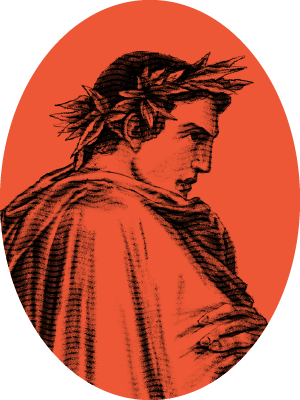
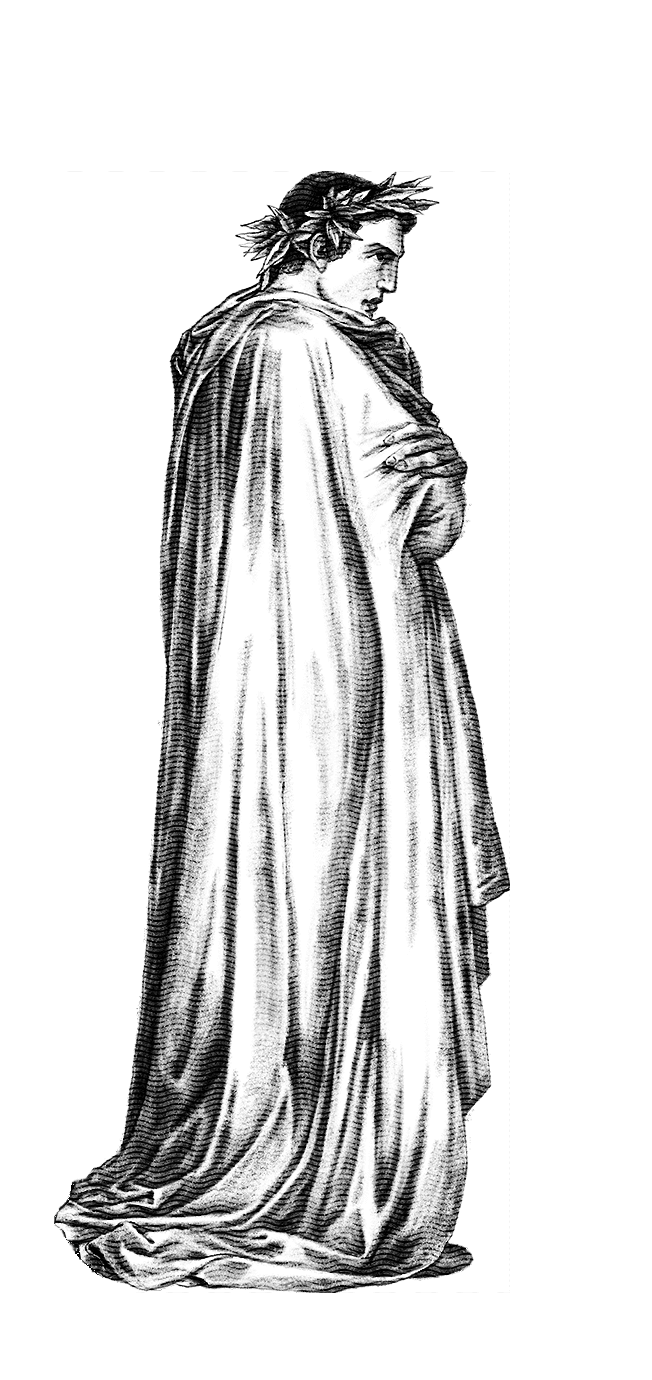


Dante conceived his Comedy as a deeply Christian work. Nevertheless, the author populated the Afterlife with mythical creatures, ancient heroes, philosophers and poets. For example, Dante places his idols — Homer, Horace, Ovid, Lucan and Virgil — in Limbo, the First Circle of Hell, inhabited by virtuous pagans. The poet saw himself as the successor to the Greek and Roman classical authors. His primary inspiration was Virgil, from whom he adopted not only an elegant poetic style, but also political ideas. In the manner of his idol, Dante eulogized the concept of the Roman Empire.
In the Divine Comedy, Virgil leads Dante out of the “gloomy forest”, which symbolizes the spiritual impasse at which the poet found himself halfway through his life’s journey. Virgil’s mission is to show Dante the Afterlife, whereupon the latter shall impart his knowledge to humanity. Having made the pagan
Virgil his guide through Hell and Purgatory, Dante follows his mentor both in fiction as a protagonist of the Comedy and in reality as an author.
Dante knew Virgil’s Aeneid by heart, and
essentially transplanted one of its themes to
the Christian ethos of his time. Like the Trojan
Aeneas, Dante journeys to the kingdom of the
dead. Both heroes have a guide (Aeneas is
aided by the Cumaean Sibyl), both encounter
sentinels and mythical beasts (Charon,
Cerberus, Phlegyas and many others). Both find
their ancestors in the world of the dead, who
predict their future: Aeneas comes face to face
with his father, Dante with his
great-great-grandfather Cacciaguida. In
Dante’s Afterlife, some characters from the
Aeneid are allotted a worthier fate. For
example, Dante awards the noble Trojan
Ripheus a place in Paradise, which is more
than he gives the latter’s literary creator Virgil.
In the mind's eye of the poet, as a reward for
striving for the truth, God revealed the future
to Ripheus, thus he became a Christian long before the foundation of Christianity.
In the kingdom of the dead as depicted in the
Aeneid, there is no system of recognition or
retribution for the earthly deeds of
humankind. Moreover, Aeneas does not
venture there so as to observe the lives of its
resident souls. He is in pursuit of a personal
goal — to be reunited with his father. Dante, on
the contrary, is on a kind of spiritual
pilgrimage, and pays great attention to the
structure of Hell, Purgatory and Paradise, as
well as the sins and punishments of their
dwellers.
Dante’s decision to abandon other writings in favor of his magnum opus — devoted to love, faith and politics — bonds him fraternally with Virgil. Both authors worked on their masterpieces until their dying breath.
In the last years of his life, Dante corresponded with Bologna professor
Giovanni del Virgilio, who hugely admired Virgil (and even shared his name). He opined that the Divine Comedy, a paean to life and death, is written in volgare (the vulgar or common Florentine dialect). In response, Dante demonstrated his mastery of the Latin language by composing several eclogues in the style of Virgil. However, in the Comedy, Dante defended the right of Italian poets to speak of the sublime in their native tongue, understandable to most compatriots.
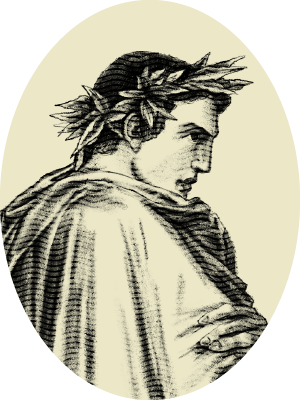
Halfway along the path of life, Dante gets lost in a dense forest. The poet finds himself by the entrance to Hell, but his path is blocked by three wild animals: a lynx, a lion and a wolf. The poet Virgil comes to the rescue, and invites Dante to accompany him through the Underworld. Upon learning that Virgil is the messenger of Dante's deceased beloved Beatrice, he readily agrees. The ancient Roman poet becomes Dante's guide through Hell and Purgatory.
Inferno,
I, 112–117
Therefore I think and judge it for thy best
Thou follow me, and I will be thy guide,
And lead thee hence through the eternal place,
Where thou shalt hear the desperate lamentations,
Shalt see the ancient spirits disconsolate,
Who cry out each one for the second death;
The three beasts that guard the entrance to Hell
correspond to three constellations:
1. Lynx 2. Lion 3. Wolf
Inferno, First Circle, Limbo
Virgil resides in Limbo, barred from Purgatory and Paradise for the misfortune of having been born before Christ. Here too are unbaptized babies and other virtuous pagans. The two pilgrims encounter the great poets Homer, Horace, Ovid and Lucan. They lead Dante to a castle surrounded by seven walls, inhabited by ancient heroes and philosophers.
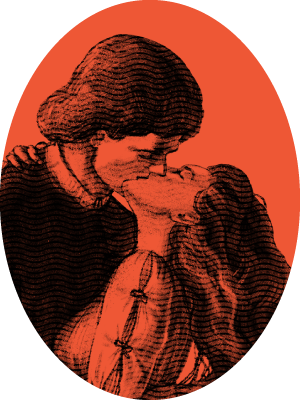



In his Comedy, Dante placed many enemies in
Hell, but for some sinners he felt nothing but
sympathy. For example, in the circle of the
lustful, the poet encounters Francesca, who hails
from Ravenna. During her earthly life, she was
married off for political convenience to the ruler
of the city of Rimini, a well-born but ugly and
bad-tempered man. The lady took a stronger
liking to her husband’s younger brother Paolo.
Catching the lovers together, her husband
stabbed both of them; this real incident
happened in the 1280s or thereabouts. In the
other world, the unfortunate ones are tormented
by an eternal whirlwind, but Francesca’s shadow
predicts an even more terrible fate for her cruel
spouse in the very depths of Hell.
The story of the lovers was widely known in medieval Italy, and was reworked in literature many times after the Divine Comedy. But the poet himself knew about it probably better than most, being closely acquainted with Francesca's family.
During his years of political exile
(1302–1321), Dante wandered extensively
around Italy, forced to seek shelter with
friends and noble patrons. In the late 1310s,
he relocated to the town of Ravenna, to a
house donated to him by the local signore,
Guido II da Polenta (also known as Guido
Novello), the nephew of the unfortunate
Francesca. Himself a poet, Guido was greatly
fond of literature. He considered it an honor to
host such a man as Dante, who was already
famous following the publication of Inferno
and Purgatorio.
His time in Ravenna turned out to be the most peaceful period of Dante’s life. Disillusioned with his former factional allies, he withdrew from the intrigues of Italian politics. The poet even passed up his last chance to return to Florence, refusing an amnesty for exiles in 1315, a condition of which was to make a humiliating public repentance. But that was compensated by at last being reunited with his children: sons Giovanni, Jacopo and Pietro,
and daughter Antonia. There in Ravenna, surrounded by friends and admirers, Dante worked busily on Paradiso, just managing to complete it before passing away.
In 1321, Dante went on a diplomatic mission to Venice on behalf of Guido Novello. The poet was no stranger to performing such duties at the behest of his patrons. But on the way back, Dante fell ill with malaria and died on September 13 or 14 at the age of 56. The poet was buried in Ravenna. According to legend, Guido Novello laid upon his forehead a laurel wreath, a symbol of literary achievement that Dante had been denied during his lifetime. Contrary to the poet’s wishes and all attempts by the Florentine authorities, his ashes were never transported to his birthplace.
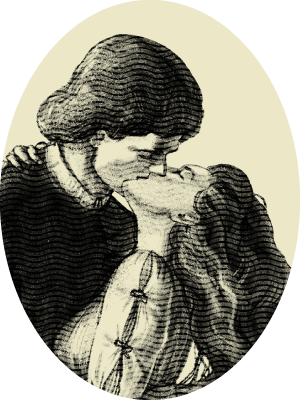


Inferno,
Second Circle
The Second Circle of Hell is inhabited by those who sinned for
the sake of love. In the pitch darkness, there circulates a
ferocious wind, symbolizing the vortex of passion.
There in Hell, Dante meets the shadows of Francesca and
Paolo, who are condemned to flying through this whirlwind in
an eternal embrace. Francesca tells the poet that their intense
mutual feelings broke out during a joint reading of the tale of
Lancelot. And although the couple are damned for the sin of
lust, Dante is overwhelmed by compassion for them, causing
him to faint.
Inferno, V, 133–138
When as we read of the much-longed-for smile
Being by such a noble lover kissed,
This one, who ne'er from me shall be divided,
Kissed me upon the mouth all palpitating.
Galehaut was the book and he who wrote it.
That day no farther did we read therein.
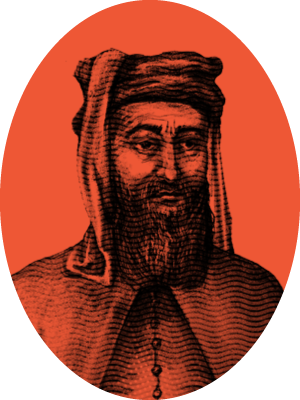
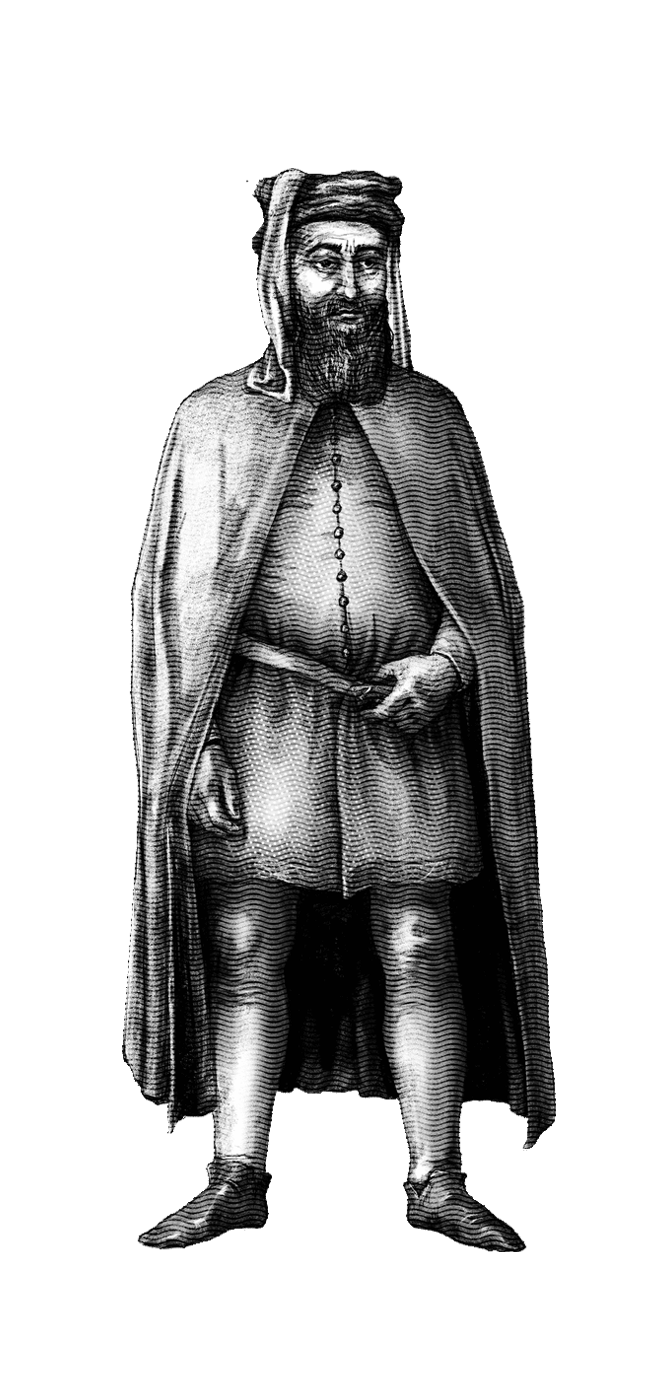


Among the heretics in Hell, Dante meets the Florentine aristocrat Cavalcante de’ Cavalcanti, punished for his Epicurean views, including disbelief in the immortality of the soul. He is the father of the poet’s best friend, Guido Cavalcanti.
Born around the 1250s, Cavalcanti junior was an outstanding poet of his time and a follower of another Guido, who bore the surname Guinizelli (and whom Dante placed in the Seventh Circle of Purgatory among the lustful), the founder of Dolce Stil Novo ("sweet new style"), a literary movement in 13th-century Italy. Some of the distinctive features of this style are allegorical language, the exaltation of unearthly love, and the "beautiful lady" as the embodiment of moral perfection.
It was poetry that brought Guido and Dante together. In his youth, the latter sent his debut sonnet, dedicated to his beloved Beatrice, to several eminent poets, but received a
favorable response only from Guido. Cavalcanti junior thus became his mentor and close friend. Over time, however, the philosophical and political views of the two poets began to diverge.
In the Comedy, for example, upon hearing Dante's voice, the shadow of Cavalcanti senior rises from the ground in the hope of glimpsing his son nearby. In the mind of the conceited father, the creative genius of his son should have allowed him to accompany Dante through the Underworld. But the latter gently reproaches him for showing disrespect to Virgil. Dante in fact considered himself as the heir to the ancient poet, hence he chose him as his guide through Hell and Purgatory. Guido’s main fault, like that of his father, is lack of faith; for Dante was seemingly given the opportunity to see the Afterlife not by virtue of his own will, but by the grace of God.
As for politics, Guido, like Dante, played an
active role in the life of Florence. Historically,
his family belonged to the Guelphs
(supporters of the Pope), who opposed the
Ghibellines (supporters of the Holy Roman
Emperor). With a view to reconciling the
factions, Cavalcanti senior married his son
Guido to the daughter of the head of the
Ghibellines, Farinata degli Uberti, whom Dante
symbolically places in the neighboring tomb.
However, in the latter half of the 13th century,
the Ghibellines’ influence faded, whereupon
infighting broke out among the Guelphs. The
rival camps are known as the White Guelphs
and the Black Guelphs; Guido, like Dante, is on
the side of the White Guelphs, but he is far
more radical. This leads him to make an
unsuccessful assassination attempt on the
leader of the Black Guelphs, his mortal enemy
Corso Donati.
In June 1300, when the situation reached a flashpoint, the Florentine authorities expelled Guido from the city, along with other dangerous rebels on both sides. Among them
was Dante, who at that time occupied the position of municipal prior. Guido was permitted to return to Florence, but in exile he fell ill with malaria and soon died.
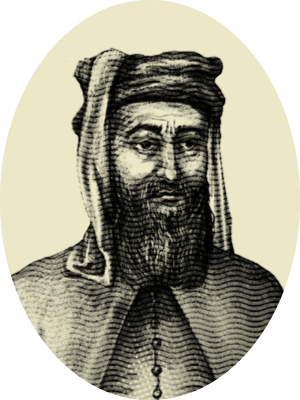


Inferno,
Sixth Circle
The Sixth Circle of Hell is where the walls of the City of Dis
begin, which encompasses several circles moving inward. Its
inhabitants are the souls of false teachers and heretics,
condemned to lie forever in red-hot tombs. Here Dante chances
upon the father of his friend Guido, Cavalcante de’ Cavalcanti.
The latter desires to learn the fate of his son, but misinterprets
Dante’s words. Deciding that Guido is already dead, Cavalcanti
falls back into his tomb in despair.
Inferno, X, 58–63
Weeping, he said to me: "If through this blind
Prison thou goest by loftiness of genius,
Where is my son? and why is he not with thee?"
And I to him: "I come not of myself;
He who is waiting yonder leads me here,
Whom in disdain perhaps your Guido had.”
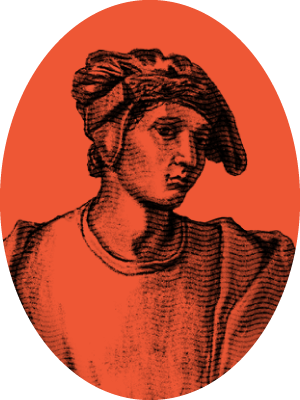
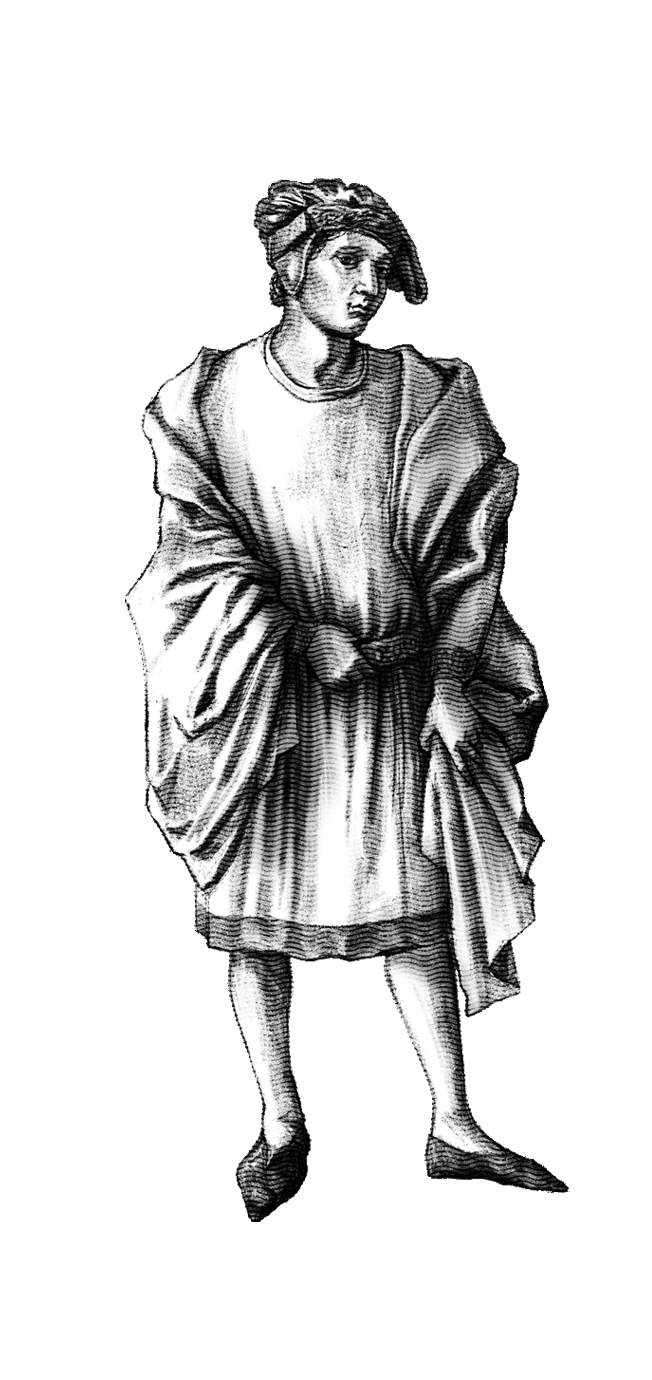


A Florentine poet, politician and philosopher, Latini exerted tremendous influence on Dante’s formation as a thinker, but in the Comedy he was consigned to the very depths of Hell.
He was considered a leading littérateur of his time. In some ways, his biography is similar to Dante’s. Starting as a notary public, Brunetto carved a political career for himself, becoming an ambassador to King Alfonso X in 1260. The Guelphs of Florence, loyal to the Pope, wanted to ask the king for assistance in the struggle against the Ghibellines of Siena, who sided with the Holy Roman Emperor. But the undertaking ended in failure. Worse, during the diplomatic mission, the Florentines lost an important battle, as a result of which the city fell into Ghibelline hands for many years.
Brunetto was forced to flee to France, where he lived in exile for almost seven years. There he wrote the main work of his life, the philosophical encyclopedia Trésor. In 1306,
Dante wrote Convivio (“Banquet”), a treatise about versification written in volgare (the vulgar Florentine dialect) and the ideological continuation of Trésor.
In 1267, Brunetto returned to Florence and achieved even greater success in politics. Twenty years on, he was even elected as a prior — one of the co-rulers of the Florentine Republic. And at the Battle of Campaldino in 1289 (in which the young Dante took part), he served as a member of the military council.
At the same time, Brunetto never stopped seeking to educate and enlighten his fellow countrymen. He translated Cicero and quoted Aristotle, Caesar, Virgil, Ovid and other ancient thinkers. The famous Florentine historian and chronicler Giovanni Villani claimed that his contemporary was “the first to instruct Florentines in oratory and statecraft in accordance with political science.” Brunetto had many young and talented students, including Dante himself and his friend Guido
Cavalcanti, who also became a renowned poet. It was these lessons that seemingly shaped Dante's worldview and literary sensibilities.
Brunetto Latini died in 1294, when Dante was 29 years old. Despite his mentor’s merits, Dante’s place for him in the Divine Comedy is in Hell among the sodomites.
In those days, sodomy in Florence and elsewhere was widespread. In the Middle Ages, the term applied not only to same-sex relationships, but to any non-standard sexual practice that did not lead to procreation. By the late 14th century in Florence, sodomy was considered a serious crime, on a par with murder, and punishable by castration or burning at the stake.
It is not clear if Dante placed Brunetto in Hell for sexual predilections, or because of arrogance and self-centeredness. He may have punished his mentor for craving fame and status in Florentine society.
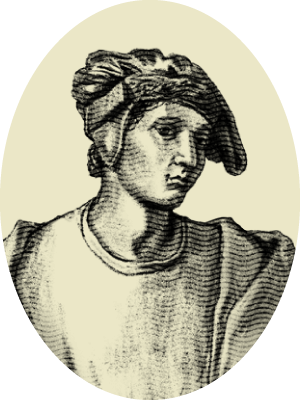


Inferno,
Seventh Circle,
Third Ring
The Seventh Circle of Hell is reserved for the violent. The circle
consists of three zones: the River of Boiling Blood, the Wood of
Suicides and the Burning Plain. In the third ring, fiery rain falls
from the sky onto the parched soil. Here the blasphemers are
stretched supine upon the burning sand, the usurers crouch
huddled and weeping, while the sodomites (the violent against
nature) run endlessly in circles. The latter make up the majority,
but it is the blasphemers who shout and scream the loudest.
In the ring, Dante greets his mentor Brunetto Latini, showing
him reverence despite his position among the sodomites. Latini
predicts the poet’s persecution and exile; he requests his
former pupil to take care of his Trésor (“Treasure”), a
three-volume collection of works.
Inferno, XV, 31–33
And he: “May’t not displease thee, O my son,
If a brief space with thee Brunetto Latini
Backward return and let the trail go on.”
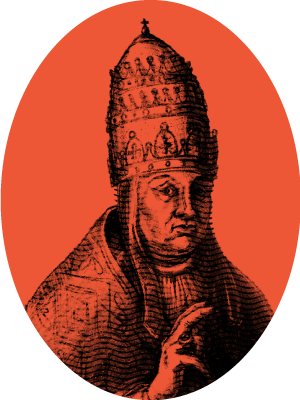
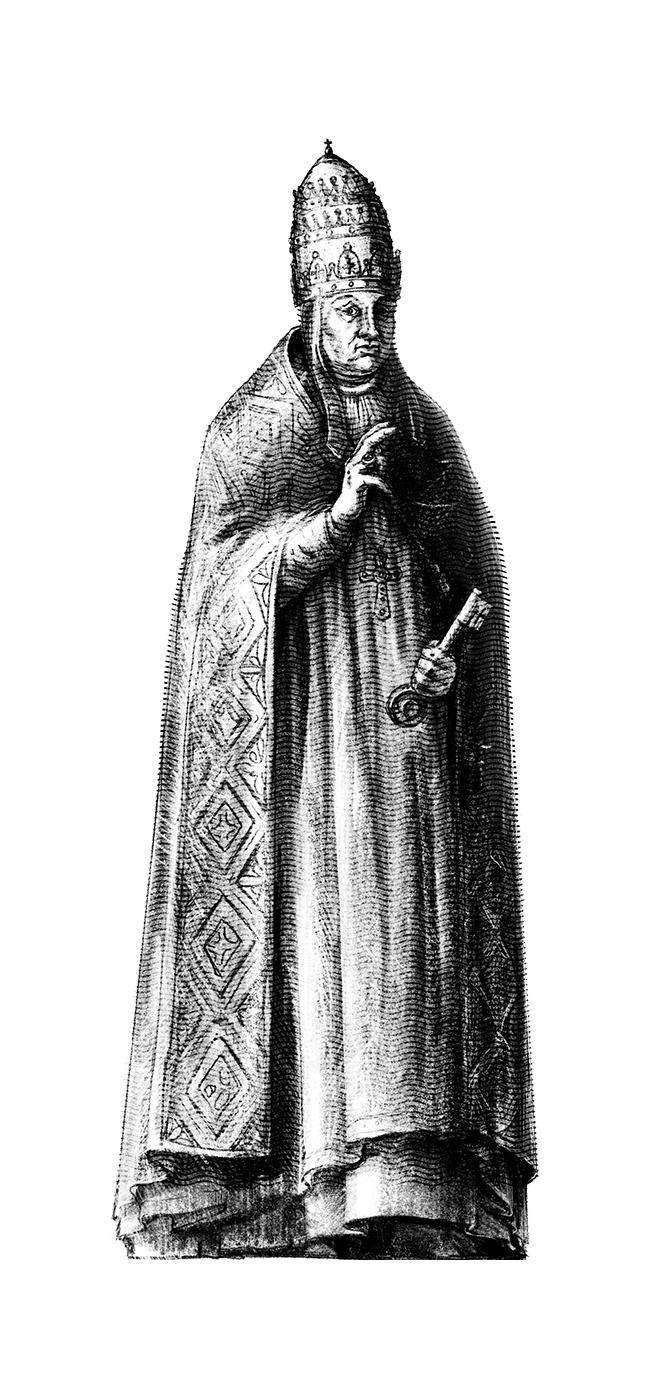


At the time of Dante's fictional descent into the Underworld, his nemesis, Pope Boniface VIII, was still alive. But Dante makes it clear that he is destined for the Eighth Circle as a simoniac.
The ambitious Benedetto Caetani, the future Boniface VIII, secured the papal throne by persuading his inexperienced predecessor to abdicate, replacing the latter in 1294 and appointing his own relatives to high ecclesiastical positions.
The year 1300 was the highest point in the reign of Boniface VIII. It marked the first Holy Year, when the promise of absolution attracted many pilgrims to Rome to make a donation. But in Florence, it was a time of political crisis. The ostensible reason was a quarrel between the two most powerful families in the city, which broke out when Corso Donati, the scion of an ancient chivalric line and a relative of Dante’s wife, allegedly poisoned his first
spouse, the sister of the banker Vieri dei Cerchi.
In fact, the complex class struggle between the nobles and the merchants had been brewing for some time. After the supporters of the Holy Roman Emperor (the Ghibellines) were expelled from the city, the supporters of the Pope (the Guelphs) became riven by internal conflict. Prosperous townspeople (the popolani) effectively squeezed the aristocracy out of control in Florence, but not without a fight. As a result, the Guelph party split into the “White” popolani led by Cerchi and the “Black” nobles headed by Donati. In reality, the picture was more nuanced. For example, Dante, who came from the nobility, joined the Whites because they were more committed to the rule of law. They were also in favor of collaboration with the Ghibellines to curb papal power.
Pope Boniface VIII himself patronized the leader of the Blacks, Corso Donati. The Pontiff hoped to bring his loyal supporters to power and annex Tuscany to his dominions. In early
1301, he drew the brother of the French king,
Charles of Valois, into the Florentine conflict,
and in June the Blacks began to organize a
poorly concealed coup. The plotters were
fined, and their leaders expelled from the city,
but this did not rectify matters.
To try to rescue
the situation, three ambassadors were
dispatched to the Pope, among them Dante.
But Boniface VIII
declined to receive them.
While the ambassadors were in Rome, the
coup took place in Florence with the support
of the Pontiff.
In November 1301, the papal representative
Charles of Valois, in the guise of peacemaker,
entered the city. He was accompanied by
a
small unit of cavalrymen, led by the recently
exiled Donati. The Whites fell from power.
In
1302, a court threatened Dante
and his
comrades-in-arms with death should they ever
return to Florence. The poet’s home was
destroyed, and he himself was forever severed
from his birthplace.
The Florentine events largely brought about Dante’s subsequent rapprochement with the allies of the Holy Roman Emperor, the Ghibellines, and his commitment to the idea of a universal monarchy, which stated that just as there was one God, so should there be just one monarch, independent of the Church.
Meanwhile, Boniface VIII sought to establish unlimited papal power in Europe, for which he paid a heavy price. The Pontiff received short shrift from King Philip IV of France (their simmering conflict flared up decisively when Boniface joined forces with the king’s brother in Italy). In response to the Pope’s claims, Philip IV accused him of heresy and usurpation of power. In September 1303, an attempt was made to capture Boniface VIII. He was placed under guard and allegedly slapped in the face. His supporters eventually managed to free the Pontiff, but he died a few weeks later from his ordeal. In 1305, he was replaced by the protégé of the French king, Clement V. The papal court was moved to Avignon, France,
marking the start of the Avignon Papacy (also known as the Babylon Captivity), which greatly weakened the Roman Catholic Church in Europe.
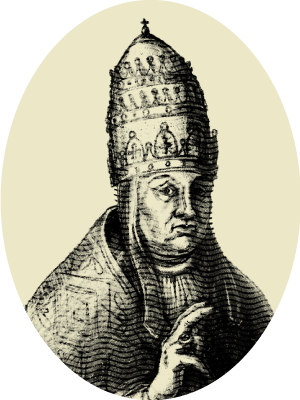


Inferno,
Eighth Circle,
Third Pit
The Eighth Circle of Hell is for fraudsters. There are so many
subcategories of this sin that this circle in Hell is divided into
ten pits, each with its own kind of punishment. Dante reserves
the third pit for those guilty of simony — the buying or selling
of ecclesiastical privileges.
In Hell, Dante encounters the soul of Nicholas III, another sinful
pope and the predecessor of Boniface VIII. Mistaking the poet
for Boniface, Nicholas is surprised, since his successor will die
only in 1303, after the supposed events are taking place.
Inferno, XIX, 52–57
And he cried out: “Dost thou stand there already,
Dost thou stand there already, Boniface?
By many years the record lied to me.
Art thou so early satiate with that wealth,
For which thou didst not fear to take by fraud
The beautiful Lady, and then work her woe?”
From the deepest point of Hell, Dante and Virgil rise to
the surface and find themselves on the opposite side of
Earth — in the Southern Hemisphere at the foot of
Purgatory. The entrance to the "second kingdom" is
guarded by the ancient Roman statesman Cato of Utica,
Dante's idol.
Purgatory is a mountain formed of seven terraces on
which the souls of the repentant are cleansed of the seven
deadly sins through suffering and prayer. At the
entrance, an angel traces the letter P (from peccato —
“sin”) seven times on Dante’s forehead, which other
angels erase as the poet ascends. At the summit of
Purgatory is Earthly Paradise, or the Garden of Eden.
Florence was no stranger to the practice of political exile.
Much depended on the complex system of allegiances
and whoever happened to be in power at any given time.
In the early 14th century, Dante found himself on the
losing side. The 35-year-old poet was in his prime, at the
height of his creative and political powers, yet in the
blink of an eye he lost everything: his home, his family,
his livelihood.
Despite his vagabond existence, Dante’s time in exile was
a highly fruitful period in which he wrote several key
works, including the Divine Comedy. But his hopes of
one day returning to Florence were never realized, which
was an enormous personal tragedy.

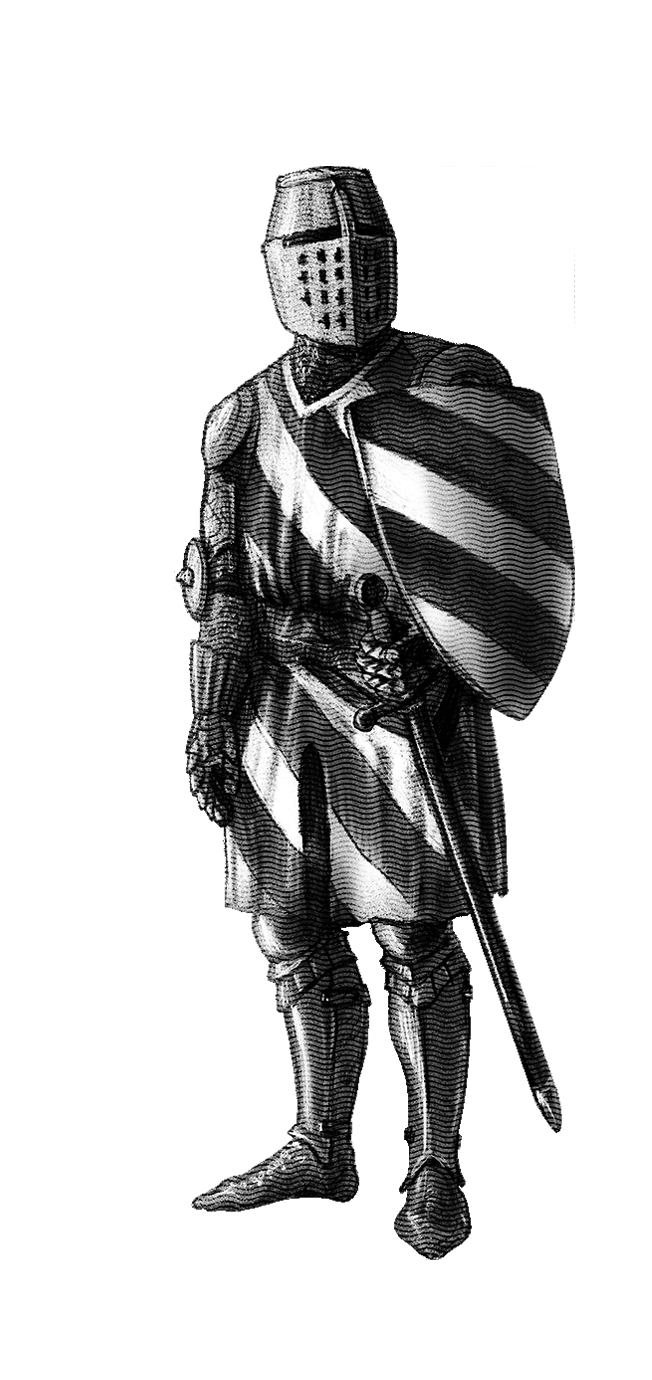


Buonconte da Montefeltro is the eldest son of Count Guido da Montefeltro, a famous politician and military leader of the time. Like his father, he fought on the side of the followers of the Holy Roman Emperor (the Ghibellines of Arezzo) against the Pope’s adherents (the Guelphs of Florence).
Despite his youth (Buonconte died in his thirties), he was a cavalry captain and one of the leaders of the Ghibellines in the Battle of Campaldino. This battle played a significant role in strengthening the position of Florence on the Apennine Peninsula, ultimately leading to the expulsion of the Holy Roman Emperor’s supporters from the city.
The blood-soaked battle took place on June 11, 1289. The two armies were comparable in size, but the Ghibellines suffered a crushing defeat. Both the Ghibelline leaders were killed, including Buonconte, whose body was never found among the 2,000 or so slain warriors on the battlefield. It is possible that Buonconte’s
corpse was disfigured beyond identification. However, the missing corpse gave rise to numerous myths and legends about the circumstances of his demise.
The Battle of Campaldino was one of two armed conflicts in which Dante fought (in August that same year, he took part in the siege of a castle near Pisa). At that time, the unknown 24-year-old poet was on the side of the Guelphs, like all his ancestors.
The blood and slaughter affected him deeply, and in the Divine Comedy he recalls the event several times. For instance, in the fifth pit of the Eighth Circle of Hell, the demon Barbariccia tries to scare Dante by making a loud flatulent noise in imitation of a marching trumpet. Dante also comes across Buonconte himself in Ante-Purgatory, where he reveals how he died.
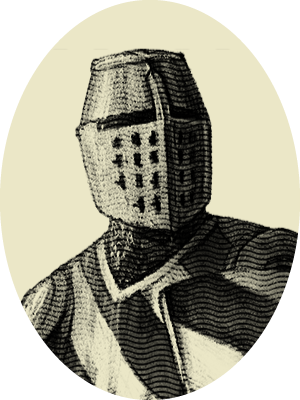


Antipurgatorio,
Second Ledge
Here dwell the souls of those who delayed repentance right up
until their death. A crowd of people descends the slope, singing
the psalm Miserere mei (“Have mercy on me”).
Dante meets Count Buonconte da Montefeltro in
Ante-Purgatory. The count tells how he was mortally wounded
in the throat in the Battle of Campaldino, but managed to make
his way to the estuary of the river Archiano. There, before
perishing, he managed to repent of his sins, which saved his
soul from the torments of Hell. But the devil snatched
Buonconte’s body by causing a flood that swept the corpse into
the river Arno, burying it on the riverbed under a layer of silt.
Purgatorio,
V, 88–90
“I was of Montefeltro, and am Buonconte;
Giovanna, nor none other cares for me;
Hence among these I go with downcast front.”
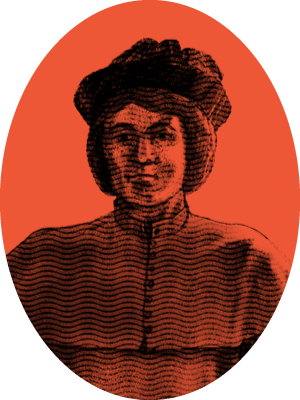
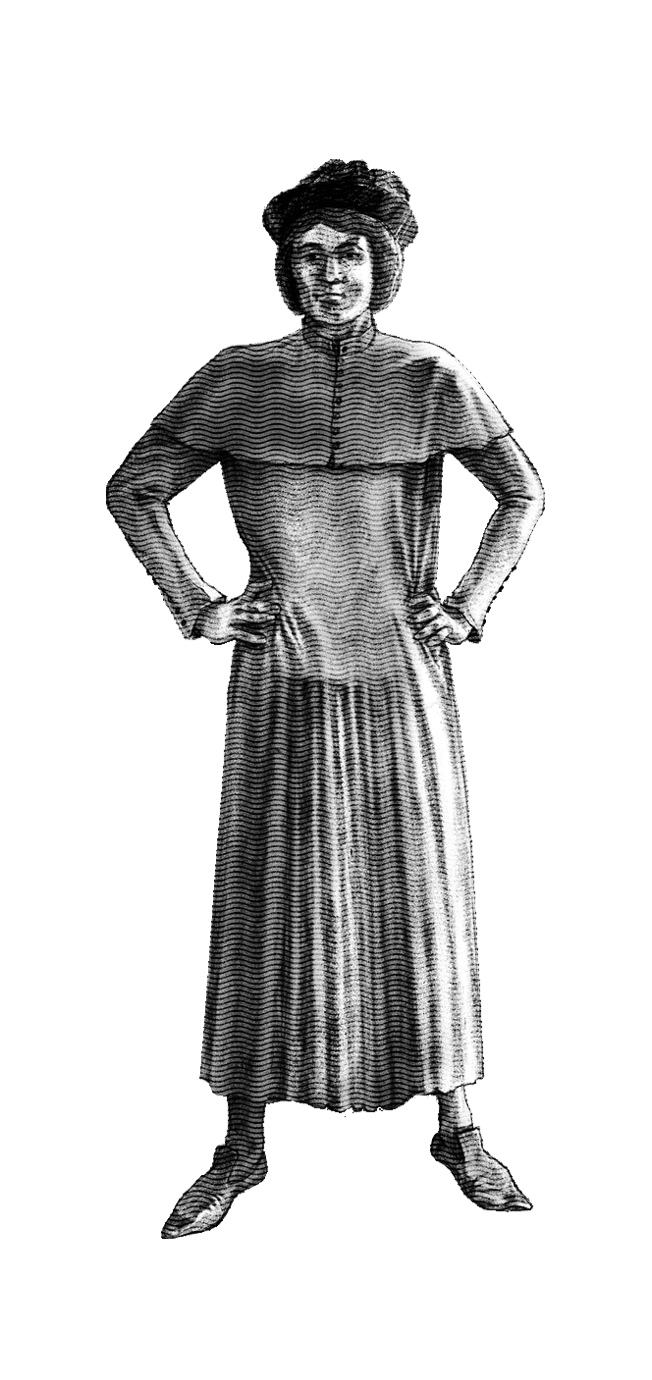


Marquis Corrado Malaspina the Young
traced his lineage to an old and influential
Tuscan family, and was the namesake of his
more illustrious grandfather, who had been
close friends with Holy Roman Emperor
Frederick II. The Malaspina family owned
vast lands in Lunigiana, a historical region
between Florence and Genoa. It was here
that Dante found shelter in the early
period of his exile in 1306-07. Little is
known about this time. The Florentine poet
was warmly received by the cousins of
Corrado (who himself died in 1294).
By all appearances, Dante
undertook diplomatic missions
on behalf of the Malaspina
marquises in gratitude for the
hospitality extended to him. For
example, with the poet’s
assistance, an agreement was
reached on the conclusion of
hostilities with the bishop and
count of the municipality of Luni.
His period with the Malaspina family was also productive in terms of literature. Here Dante wrote two linguistic-philosophical treatises: the second volume of De vulgari eloquentia (“On eloquence in the vernacular”) and Convivio (“Banquet”). However, both works remained unfinished. Residing in the Malaspina Castle, the poet worked on Inferno, part one of the Divine Comedy.
Dante was immensely grateful for the family’s warm hospitality. This is evident from the frequent and affectionate references to the Malaspinas in the Comedy. The grandest gesture is Dante’s encounter with Corrado in the Valley of Earthly Rulers in Purgatory. The poet praises the Malaspina family, claiming that its noble lineage is known throughout Europe. In response, Corrado predicts that Dante himself will taste their legendary hospitality by taking shelter in the Malaspina Castle.
The only other Italian aristocrat eulogized in
the Comedy is Cangrande della Scala, ruler of Verona, who hosted Dante after the Malaspinas, becoming his close friend and patron for many years. Cangrande had the honor of reading Paradise before anyone else when Dante presented him with a personal copy. The poet was less kind to other Italian signori — the best they could hope for was cold indifference, but often they were the subject of biting satire.
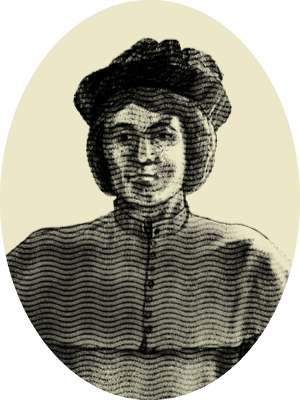


Malaspina (Italian: mala +
spina meaning “evil thorn”)

The Valley of
Earthly Rulers
The Valley of Earthly Rulers, on the threshold of Purgatory, is
inhabited by leaders who neglected their higher duty in favor
of worldly affairs. At sunset, two angels appear at either side of
the valley to protect its inhabitants from the Serpent Tempter.
Here Dante meets Marquis Corrado Malaspina the Young. His
soul asks about the fate of the familial “throne”. The poet
replies that the praises of the Malaspina family are being sung
throughout Europe, although he himself knows about them
only from hearsay. Corrado then predicts that in seven years’
time Dante will find shelter in their home and become
personally convinced of what he has heard.
Purgatorio, VIII, 118–120
Corrado Malaspina was I called;
I’m not the elder, but from him descended;
To mine I bore the love which here refineth.
The Malaspina bloodline was descended from the Obertenghi dynasty; in 1221 it split into two branches with similar coats of arms. On the right bank of the river Magra, which dissected the historical territory of Lunigiana, lay the possessions of the Spino Secco (“dried thorn”) branch of the family, and on the left those of the Spino Fiorito (“bloomed thorn”) branch. The first branch was founded by the grandfather of Corrado Malaspina the Young.
Malaspina (Italian:
mala +
spina meaning
“evil thorn”)


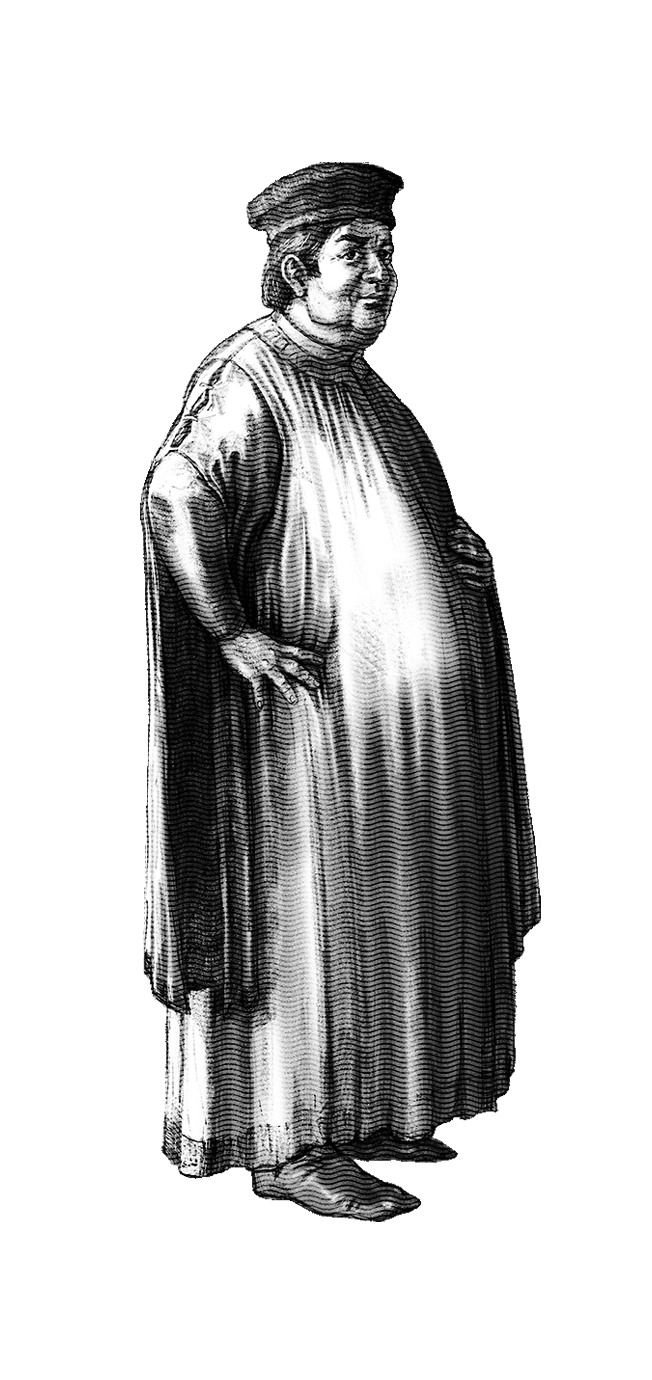


Forese Donati was one of Dante’s closest friends and a distant relative. At the age of 12, the future poet was betrothed to Forese’s six-year-old cousin, Gemma Donati. When the time came, Dante fulfilled the obligation and married Gemma. The year was most likely 1285, five years before the death of his beloved Beatrice. In those days, marriage was an instrument to create political unions and produce offspring; tradition required men to pay “courtly love” to a woman, but this did not necessarily have to be his wife.
Dante’s muse was a lady named Beatrice, and it is to her that he dedicated all his works. He never once mentioned Gemma anywhere in his writings, so whether the marriage was happy is hard to tell. It is known that they had four children: Giovanni, Jacopo, Pietro and Antonia. When Dante was expelled from Florence due to the influence of his main political opponent, Corso Donati (a relative of his wife and the brother of Forese), Gemma remained in the city with the children. She
never saw her husband again.
As for Forese, there is precious little biographical information, except that he had a reputation as a jester and a boozer.
His character is largely revealed in his poetic jousting with Dante. In this literary squabble, the latter dispenses with the exalted language of his early poems and demonstrates his creative range by switching to the “low” vernacular style. Six sonnets (known as the Tenzone) have survived, in which Dante and Forese skillfully and cynically pour poetic mud over each other.
For instance, Dante accuses Forese of gluttony and larceny, and quips that his wife is cold in her empty bed, hinting that Forese is not performing his conjugal duties. The latter, in turn, pokes fun at Dante’s poverty, claiming that he will end his days at the Pinti Hospice, founded by the Donati family for the poor: “I
see God’s house in Pinti. And what there? Three eating off one plate, and the third is Dante in his tattered garments.”
Such mutual invective was, however, merely a tribute to the poetic tradition; in real life Dante and Forese got on famously well. Most likely, they struck up their close friendship almost immediately after the death of Beatrice. The circumstantial evidence indicates that Dante was not too proud of this period of his life. Depressed after the loss of his beloved, he tried to drown his sorrow in wine and pleasure. But despite all this, Dante's attitude to Forese remained warm.
This is posited by the fact that Dante, for all his sins, placed his prematurely deceased friend (who died in 1296 before the age of 40) in the Sixth Circle of Purgatory. And their meeting in the Divine Comedy is full of genuine affection and compassion. In Purgatory, Donati is gaunt with hunger and thirst. To Dante, the sight is truly shocking. He
says that his heart is again clenched with pain, even though he has already mourned his dead friend. Both recall the time they spent together with nostalgia.

Purgatorio,
Sixth Circle
In the Sixth Circle of Purgatory are the gluttons, condemned to
the eternal torment of hunger. They sit at the foot of trees, but
cannot reach the fruit.
Dante sees Forese Donati, a relative of the poet’s wife and a
friend from his youth, among the throng of shadows with pallid
faces. Forese says that, thanks to his own wife, the pious Nella,
he shall quickly make his way through the circles of Purgatory.
Purgatorio,
XXIII, 46–51
This spark within me wholly re-enkindled
My recognition of his altered face,
And I recalled the features of Forese.
"Ah, do not look at this dry leprosy,"
Entreated he, "which doth my skin discolor,
Nor at default of flesh that I may have;
Purgatorio, XXIII, 31–33
Their sockets were like rings without the gems;
Whoever in the face of men reads “omo”
Might well in these have recognised the “m”;
In the Middle Ages, it was believed that the features of the human face spelled the word omo, with the eyes representing the letter “o” and the eyebrows and nose the letter “m” — this in turn was an abbreviation of Homo Dei (“Person of God”). The letter “m” was especially pronounced on the faces of emaciated people.

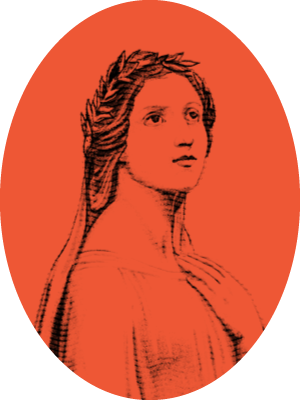
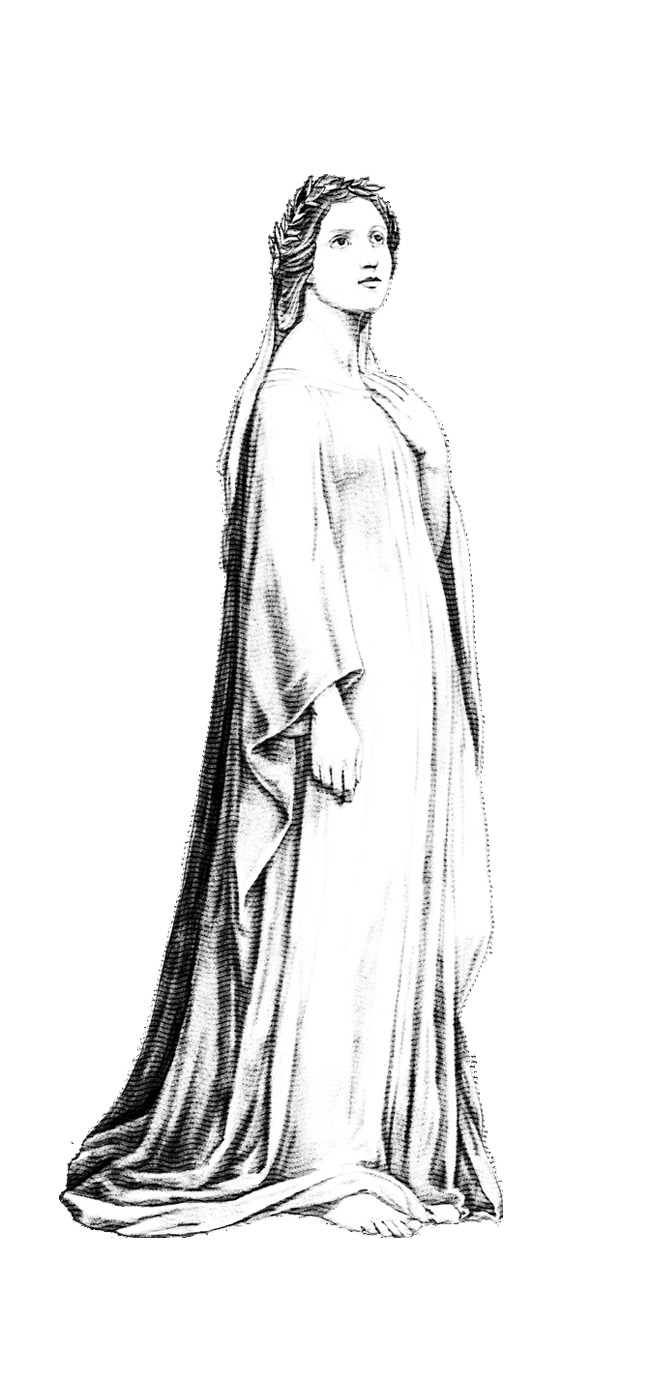


Dante and Beatrice lived in the same district of Florence, their families belonged to the same political faction, and the poet even befriended Beatrice’s elder brother. Despite this, Dante’s contact with his beloved was limited to just a few brief meetings — at least that is what the poet himself asserted.
According to legend, he first set eyes
on his future muse at a feast hosted
by her father, the respected banker
Folco Portinari. Bice (Beatrice’s pet
name) and Dante were both around
nine years old at the time. Despite
his tender age, it was love at first
sight.
However, their next meeting took place a
whole nine years later: Dante spotted Beatrice
walking in the street, and she greeted him
with an affectionate bow, a very significant
gesture in those days. Thereafter, the poet
wrote his first sonnet, which he dedicated to
his sweetheart.
By this time, Beatrice was already a
married donna, wedded to a scion of an
influential Florentine family for political
motives. Dante’s beloved was now part of
the most respectable circle of the urban
elite, a step above the poet on the social
ladder.
This did not prevent Dante from admiring
Beatrice from afar and devoting poetry to
her. True, so as not to bring discredit upon
his beloved, the poet courted other ladies,
as was customary for the time. Some
accounts suggest that they were not
merely screens, but that Dante had
genuine feelings for them. Whatever the
case, these courtships did not endear him
to Beatrice. During one of their chance
encounters, she rejected the poet by not
responding to his bow. After that, Dante
broke off his other attachments.
Beatrice passed away in 1290, a whole decade before the fictitious events of the
Comedy. In Dante’s own words, for a while afterwards he became enthralled by another lady, who comforted him in his sorrow. This coincided with a period of intense philosophical study in the first half of the 1290s, and he interpreted this woman as a kind of philosophy. In the Comedy, Beatrice reproaches the poet for betraying her memory and following a false path in search of truth and verity.
After the death of his beloved, Dante combined his early lyrics into the collection La Vita Nuova (“The New Life”), in which the poems alternate with prosaic explanations of their meaning and descriptions of the circumstances in which they were created. It is this work in particular that sheds light on Dante’s acquaintance with the lady of his heart. In creating the ideal image of Beatrice, Dante did not do without hyperbole. For example, there is his theological digression on the number nine, which he sees as divine for being the square of three (the number of the
Trinity). For him it is no coincidence that they met at the age of nine; instead it is a sign that Beatrice is a miracle incarnate.
In La Vita Nuova, the poet idealized her as an angel and associated her with the figure of Christ. Later, in the Comedy, Beatrice is primarily an allegory of piety and divine wisdom. She dwells among the saints and apostles, possesses sublime knowledge and helps Dante achieve spiritual insight.
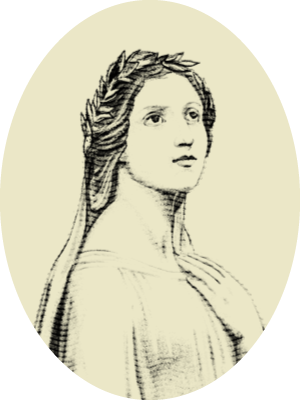


Purgatorio,
Earthly
Paradise
Earthly Paradise (or the Garden of Eden) is the summit of
Purgatory, which is represented as a mountain. After the fall of
Adam and Eve, entry was barred to the living. Here Dante
encounters the beautiful Matilda. She baptizes the poet in the
Lethe, the river of forgetfulness, immersing his head in the
water. Having washed away his burdensome memories, the
poet is able to gaze into the eyes of his beloved Beatrice.
She is first mentioned in the Comedy as the initiator of Dante’s
journey through the Underworld. But the poet only gets to
meet her later, in Earthly Paradise. Beatrice appears
dramatically in a chariot as part of an elaborate procession, the
sight of which transfixes Dante. His beloved urges him to
repent, and raises him to the heavens.
Purgatorio, XXX, 31–33
Over her snow-white veil with olive cinct
Appeared a lady under a green mantle,
Vested in color of the living flame.
Beatrice herself resides in the upper echelons of Paradise in the celestial amphitheatre, among the saints and apostles.
Golden candlesticks
Bands of colored light
24 elders
Four six-winged beasts
Three dancing women
Griffin
Beatrice in her chariot
Four dancing women
Two elders
The four of humble aspect
Solitary old man
Beatrice herself resides in the upper echelons of Paradise in
the celestial amphitheatre, among the saints and apostles.
Dante's Paradise is arranged according to the geocentric
system of Ptolemy, with the Earth placed motionless at
the center of nine celestial spheres. Each sphere is caused
to rotate by the corresponding angelic order and the
Primum Mobile (the Ninth Sphere), which derives its
force from the divine light. Beyond the Primum Mobile
lies the Empyrean, the abode of God, which radiates
divine light. It is this light that allows Dante to rise
through the spheres. But it is too powerful for humans to
bear; hence the poet gazes at its reflection in the eyes of
his beloved Beatrice.
The hierarchy of Paradise differs from Hell and
Purgatory — each level here is equally blissful, and all
souls are content with their lot.
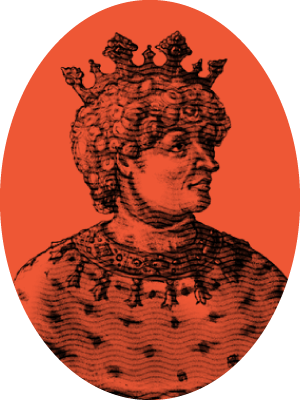
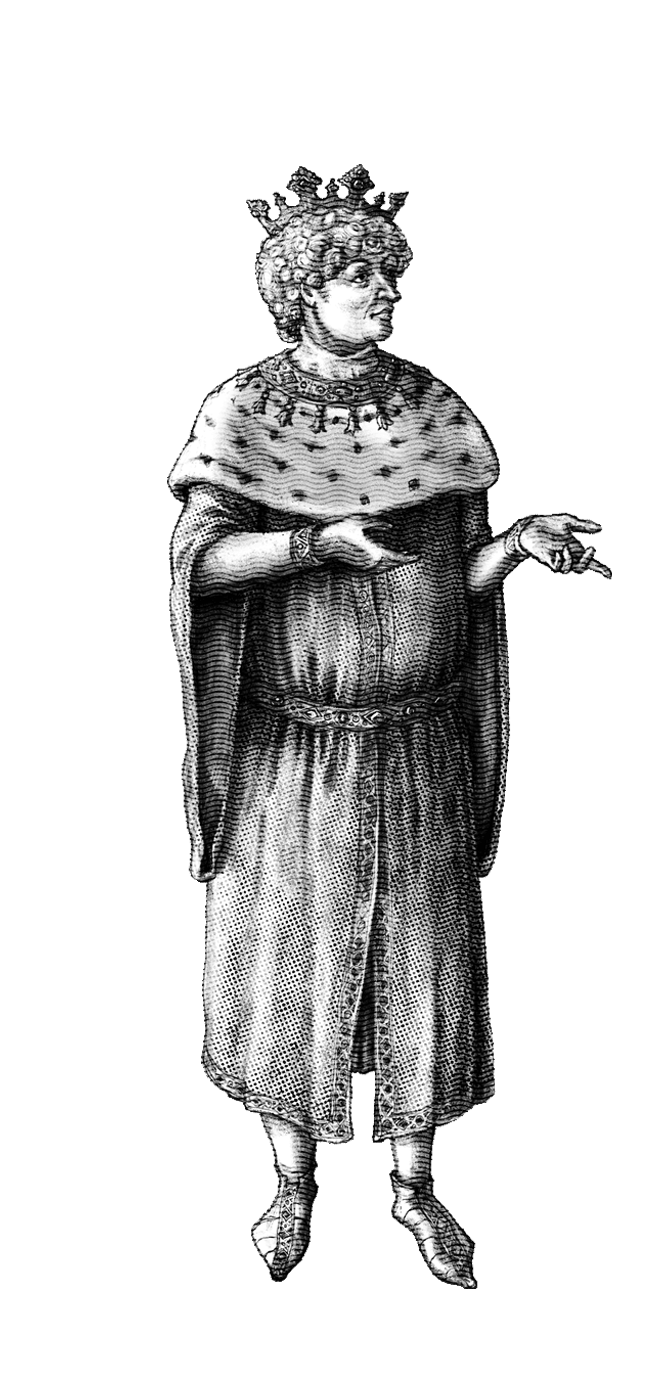


Charles Martel of Anjou was the eldest son of Charles II, King of Naples. The family had high hopes for him. Not without reason did their firstborn bear the name Martel (from Latin martellus meaning “hammer”). The epithet was first adopted by the iconic leader of the Franks and the founder of the Carolingian dynasty. It was hoped that Charles Martel of Anjou would realize the ambitious plans of his grandfather Charles I — to seize the island of Sicily once and for all, and to expand the territories of the Kingdom of Naples. Moreover, Charles was heir not only to the southern Italian lands, but to the Hungarian throne too.
But he failed to live up to his epithet. The young prince was not as forthright as his ancestral namesake, nor as enterprising as his parents and grandfather. After the death of the king of Hungary, the 19-year-old Charles formally inherited his title. But he did not press his rights to the throne (unlike his own son, who later earned a reputation as one of Hungary’s most successful rulers). Although
Charles died of the plague in 1295 at the age of 23, he nevertheless left an indelible mark on Dante’s life.
A year before his death, Charles visited Tuscany to meet with his father, who had just returned from France after signing a long-awaited truce with the de facto ruler of Sicily. In Siena, Charles was met by a delegation of ambassadors from the Republic of Florence, which included the 29-year-old Dante. A few days later, Charles visited Florence itself. Historians suggest that the prince and the poet may have developed a rapport in light of their common views on art. It seems that Charles read and appreciated Dante’s poems. Dante, in turn, took such a liking to Charles that in the Divine Comedy he placed the prematurely deceased prince in the Third Sphere of Paradise.
The poet seemingly saw great political potential in his friend. In his eyes, the prince was the archetype of
the ideal enlightened monarch and the savior of Italy. Dante would later assign this role to the ruler of the Holy Roman Empire, Henry VII.
After making the acquaintance of Charles, Dante’s political career began to develop rapidly. In 1295, he was elected first as a city elder and then to the Council of the Hundred, which was in charge of the Florentine Republic’s financial affairs. In 1300, Dante was propelled to the post of prior, effectively becoming one of the seven rulers of Florence.
But he did not last long in this position — a year later his political opponents came to power and expelled him from his home city.
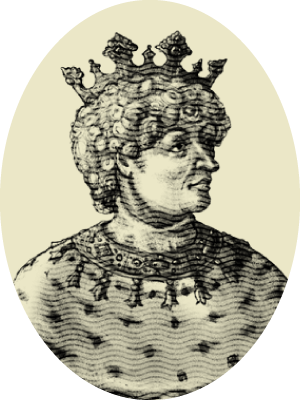


Paradiso,
Third Sphere,
Venus
The Third Sphere is home to the souls of lovers who earned souls of lovers
their place in heaven by realizing in time that love for God is
more important than anything else. They tell Dante about the
need to conscientiously follow nature and the cleansing power
of love. The Sphere of Venus is governed by the principia, which
watch over earthly rulers.
Here Dante meets Charles Martel of Anjou. In the Divine
Comedy, he represents male youth and the image of an
enlightened young prince, a friend of poets and artists.
Paradiso, VIII, 49–51
Thus changed, it said to me: “The world possessed me
Short time below; and, if it had been more,
Much evil will be which would not have been.”
Charles and Dante discuss the political nature of human beings. In line with Aristotle, the poet believes that civilian life is the catalyst for individual realization and building relationships between people.
Charles says that society needs division of labor, hence people are born with different talents and inclinations, and he gives examples:
|
warrior |
|
|
statesman |
|
|
clergyman |
|
|
inventor and artist |
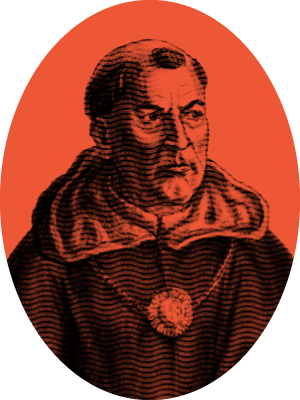
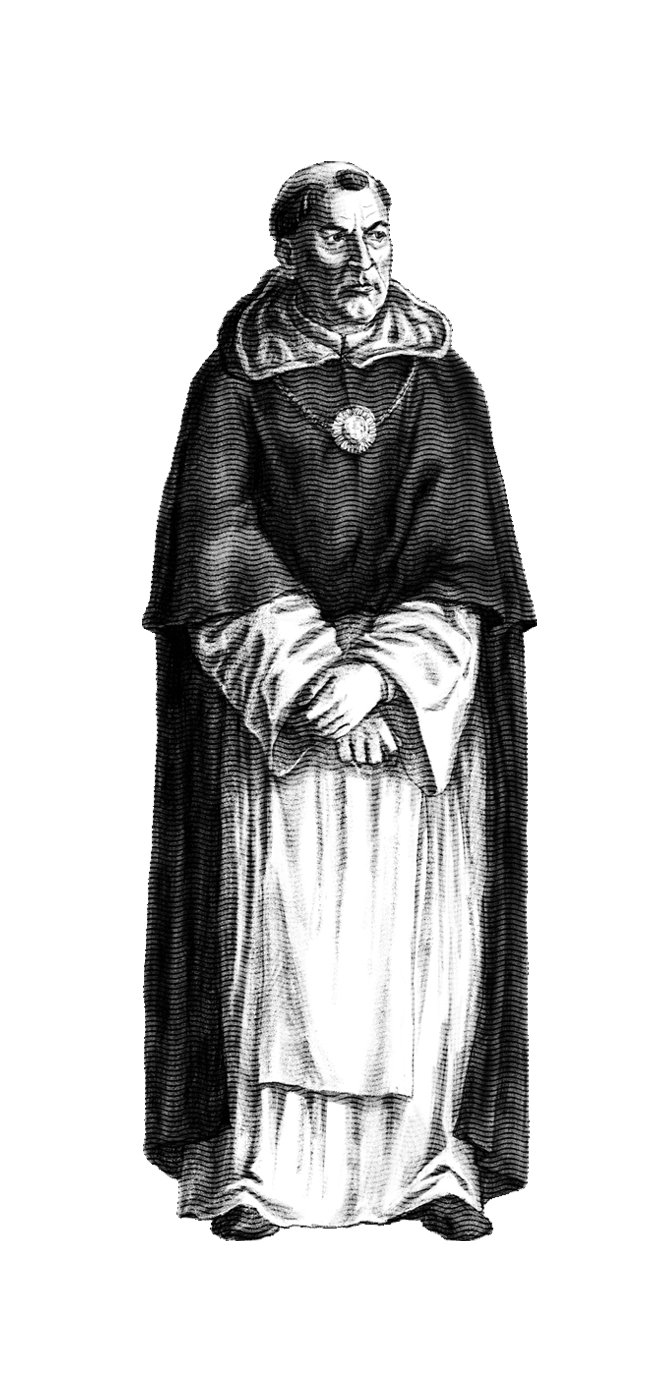


Thomas Aquinas was of noble Italian lineage. At the age of five, his family sent him to be educated at a Benedictine monastery, but, having matured, Thomas elected to join the Dominican Order. During his life, he wrote dozens of treatises and commentaries on biblical texts, basing his theological conclusions on the teachings of Aristotle. His most famous works are Summa contra Gentiles (translated as On the Truth of the Catholic Faith) and Summa Theologiae (Summary of Theology).
Thomas died in 1274, when Dante was nine years old. His teachings formed the basis of one of the most influential philosophical schools in Catholicism, known as Thomism.
But in the latter half of the 13th century, not all contemporaries were convinced of his ideas. Thomas was canonized only in 1323, two years after Dante’s death.
Dante himself began to deepen his knowledge of philosophy after the loss of his beloved Beatrice, in the 1290s. He turned to the texts of ancient thinkers and medieval scholastics, in particular Thomas Aquinas. It seems that Dante became closely acquainted with his teachings at the Santa Maria Novella Basilica in Florence, where the Dominicans read philosophical sermons and held debates under the guidance of Thomas’ favorite disciple, Remigio dei Girolami.
Dante shared Aquinas’ opinion that philosophy, theology, reason and faith can all coexist in harmony. He was in solidarity with him on the relationship between form and matter (matter does not exist without form and vice versa, but there are non-material forms, such as angels), as well as on the nature and hierarchy of angels (although, unlike Thomas, Dante believed that they have no memory).
Dante also believed that Aquinas had
anticipated his view of monarchy as the best form of political power, although he could not agree with the latter that emperors should submit to papal authority. The poet also partially borrowed from Thomas the concept of Purgatory and the hierarchy of sins. Before the Divine Comedy, no one had ever described this aspect of the Afterlife in such detail.
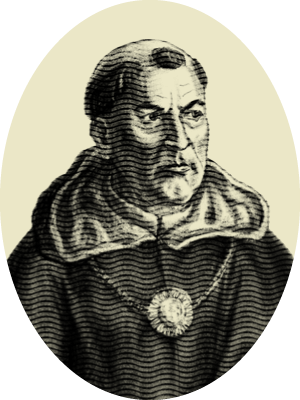
Paradiso,
Fourth Sphere,
The Sun
The Fourth Sphere is inhabited by sages and great theologians,
who form two circles. The Sphere of the Sun is governed by
angels, who fight the forces of evil. Here Dante meets the
philosopher and theologian Thomas Aquinas, describing him as
a guiding light. In turn, Thomas invites the poet to see who
else is present in the “garland” of luminaries.
Paradiso, X, 100–103
If thou of all the others wouldst be certain,
Follow behind my speaking with thy sight
Upward along the blessed garland turning.
Three times the 24 sages, who form a double garland, circle around Dante. They represent 24 flowers that have grown from the seed of true faith.
First ring
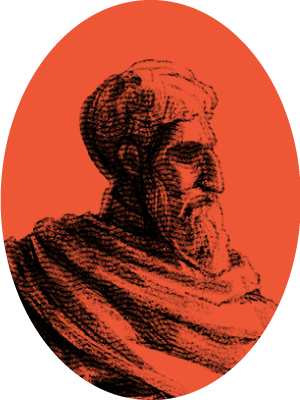
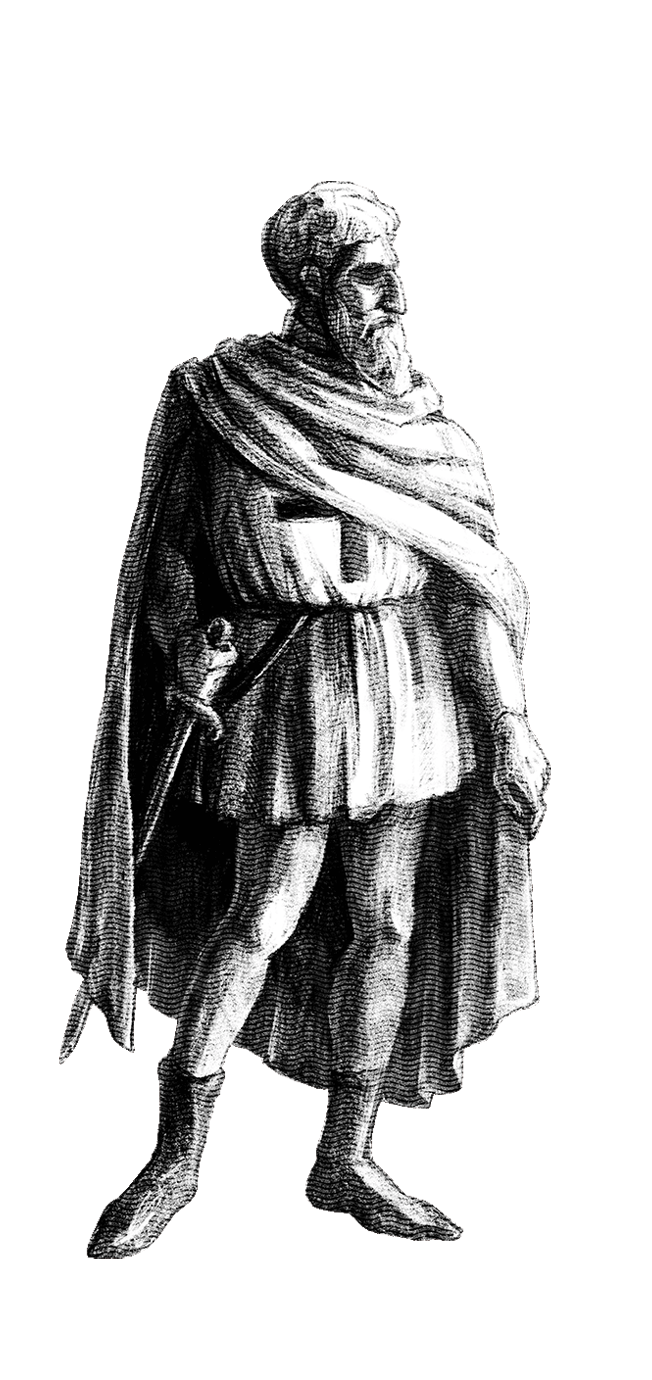


In May or June 1265, Alighiero di Bellincione, a Florentine nobleman of moderate means, and his wife, Bella degli Abati, welcomed the arrival of their firstborn child. The boy was baptized Durante, but posterity has remembered him under the abbreviated name Dante.
The mother of the future poet died when he was a child, a loss that caused him suffering throughout his life. His father, probably a lawyer and a usurer, married for a second time, after which he had two or three more children (according to some accounts, Dante had one half-brother, while his sisters were full-blood relatives). Alighieri senior passed away in 1283, and at the age of 18 Dante became the head of the family. His relationships with his brother and sisters seem to have been amicable. His brother Francesco, for instance, greatly helped him in his early years of exile.
Little is known about Dante’s ancestors. On his
journey through the afterlife, the poet meets only one relative, his great-great-grandfather Cacciaguida. Born 1091, he took part in the Second (unsuccessful) Crusade, was knighted by the emperor for bravery, but died heroically soon afterwards. Dante’s last name came from Cacciaguida’s wife, a descendant of the Aldighieri family (which later became Alighieri). In the Divine Comedy, through the lips of his great-great-grandfather, the poet extols the peaceful, idyllic Florence of the past, as opposed to the 13th-14th century republic torn by political strife.
Dante himself was born when the decades-long struggle between the two local factions of the Guelphs and the Ghibellines was drawing to a close. According to legend, the blood feud arose in the early 13th century after the young Buondelmonte dei Buondelmonti jilted a girl from the Amidei family on their wedding day, preferring another. Out of revenge, her relatives murdered the unfaithful groom. One part of
Florence (the Guelphs) sided with the victim; the other (the Ghibellines) supported the perpetrators. In Dante’s Inferno, the main instigator of the crime is disemboweled.
But the real conflict between the factions was political. In those days, a fierce rivalry raged between the papacy and the Holy Roman Emperor Frederick II for power in Italy. The populace of its northern regions was divided into the Ghibellines, who supported Frederick II, and the Guelphs, who backed the Pope. Power alternated between the two parties. Dante’s ancestors, who traditionally belonged to the Guelphs, suffered greatly from the in-fighting, with the Pope’s allies twice being expelled from Florence.
But in 1250 Frederick II died, followed in 1264 by the Ghibelline leader Farinata degli Uberti (whose family had been involved in the murder of Buondelmonte). The Holy See formed an alliance with France, which routed the Ghibellines in 1266, and a year later the
emperor’s allies were expelled from Florence, stripping them of political heft for a long time to come.
Although Dante placed Frederick II and Farinata in the Sixth Circle of Hell as heretics, he did not feel animosity for the political opponents of his ancestors. He began writing Inferno in the early 1300s, by which time he had been exiled and won over to the Ghibelline cause, before finally breaking with all political factions in favor of his idea of a just universal monarchy. Dante saw Frederick II as the last legitimate heir of the Roman Empire, and an example of a monarch independent of the papacy. And he respected the Ghibelline leader Farinata for refusing to destroy his native Florence for the sake of consolidating his party’s power.



Paradiso,
Fifth Sphere,
Mars
In the Fifth Sphere, Dante lays eyes on the warriors of the
Faith: those who gave their lives for God and thus displayed
the virtue of fortitude, angels who personify divine strength
and bestow resilience. Heat emanates from Mars, causing
objects to ignite. The “incandescent star” glows a reddish pink
color, which Dante associates with the heavenly sounds of
violins and harps. It is here, inside the Red Planet, that Dante
meets his ancestor, the crusader Cacciaguida, his own great-great-grandfather. He predicts Dante’s exile and the
scheming of his enemies, and instructs him to write and tell
the world about what he has seen on his journey through the Afterlife.
Paradise, XV, 88–90
“O leaf of mine, in whom I pleasure took
E'en while awaiting, I was thine own root!”
Such a beginning he in answer made me.
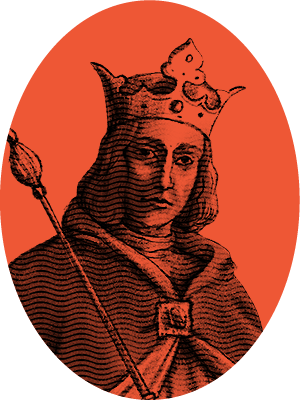



In Dante’s time, Italy was not united. The southern territories were under the Sicilian and Neapolitan kingdoms. The central part was ruled by the popes. And the semi-autonomous north (including Florence) was part of the Holy Roman Empire, where German kings were elected emperor by local princes. Northern Italy was ruled by municipalities — large trading cities that defended their independence and competed amongst themselves. Dante, for his part, dreamed of peace and unity in his native land.
His ideal was a universal monarchy
led by the Roman people as the heirs
to the ancient Roman Empire. In it,
power would be granted to the —
educated and fair-minded —
monarch directly by God, without
the mediation of the Church.
Dante’s hopes for the realization of this
utopia were pinned on the new German king,
Henry VII.
King Philip IV of France had his brother lined up for the vacant throne of the Holy Roman Empire, but in 1308 the electors opted for the safe (in their eyes) Count Henry of Luxembourg. His candidacy was backed by the archbishop of Trier, the brother of the future emperor. In addition, Henry was secretly supported by the protégé of the French king, Pope Clement V, who was wary of the excessive power-grabbing of his patron.
In 1250, the long tradition of crowning emperors in Rome was broken. With a view to restoring imperial power in Italy, Henry in 1310 embarked on a Rome campaign. Besides wanting a papal imperial coronation, his official objective was to reconcile the warring forces tearing the country apart. The king was well received by both the Ghibellines, the original supporters of the Holy Roman Emperor, and the White Guelphs, who were seeking to regain their former influence. Their common enemies, the Black Guelphs, were wary of the “peacemaker” — and this largely
predetermined where his own sympathies lay.
Many cities immediately swore allegiance to Henry VII. As early as January 1311, in Milan, he was crowned King of Italy. Also present at the ceremony was Dante. All that remained was for Henry VII to be coronated with the imperial crown in Rome. However, parts of Northern Italy, such as Florence, refused to submit to his authority. The rebellion was brutally suppressed by Henry's troops from Germany. And although the violence and plunder (cities that had sworn allegiance were forced to pay tribute) dented Henry VII's reputation, Dante saw him as the savior — both his own and Italy's.
In a message to the Florentines in the spring of 1311, the poet criticized his compatriots for their unwillingness to yield. And in another letter to Henry VII himself, he called upon the king to seize Florence as soon as possible. But Henry was too busy pacifying other cities to act quickly. Nevertheless, in September, he
finally managed to subdue the Tuscan capital, despite having lost most of his army by then. After the victory over Florence, an amnesty was declared for political exiles, but, ironically, Dante did not take it up.
Henry’s position exacerbated his rivalry with both the French king and the ruler of Naples, Robert, who also claimed dominance in Northern Italy. In the end, Clement V turned his back on Henry (for which Dante prepared a place in the Eighth Circle of Hell for the treacherous pontiff).
All the same, in 1312, Henry was finally given a papal coronation as Holy Roman Emperor in Rome, but his position was tenuous. He attempted to eliminate the threat posed by Robert, King of Naples, but to no avail. Finally, in August 1313, Henry VII died of malaria. For Dante, the death of the man for whom he had harbored such high hopes came as a bitter blow, yet he kept faith in his own ideals until the very end.
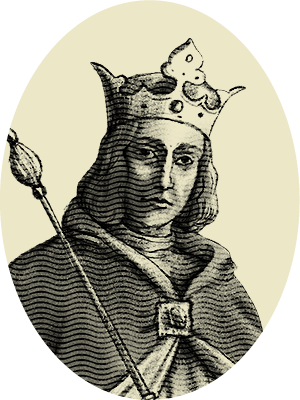


Paradiso,
Tenth Sphere,
Empyrean
The Tenth Sphere is the abode of God, as well as of angels and
blessed souls. Empyrean is where the resurrected righteous go
after the Last Judgment, those to whom it is given to
contemplate the Creator.
“Empyrean” comes from the Greek word empyros meaning “in
the fire (pyre)”; it consists of infinitely pure light. Dante
describes the Tenth Sphere as a flaming rose surrounded by a
Roman amphitheater.
Beatrice shows Dante to a place in the amphitheater where a
throne and crown await the poet’s idol, Emperor Henry VII.
Paradise, XXX, 136–138
Shall sit the soul (that is to be Augustus
On Earth) of Arrigo, who shall come
To redress Italy ere she be ready.
Colors of the Trinity:
- Gold (the Father)
- White (the Son)
- Red (the Holy Spirit)
- Mary
- Old Testament wives
- “God’s servants”
- John the Baptist
- New Testament righteous ones
- Old Testament righteous ones
- souls of infants


Map of Dante’s Afterlife
Dante’s Afterlife has a precise “geography” and structure. It consists of three “kingdoms” — Hell, Purgatory and Paradise, whose architecture corresponds not only to theological beliefs, but also to ideas about physics, geology and the Universe that were prevalent in Dante’s time.
Each “kingdom” is described in a separate part of the Divine Comedy. Dante spent more than 15 years on the work. Inferno was written in 1304-09 and Purgatorio in 1310-14. As for Paradiso, Dante began writing it around 1316 and finished it shortly before his death.
View map of Central Italy at the turn
of the 13–14th centuries
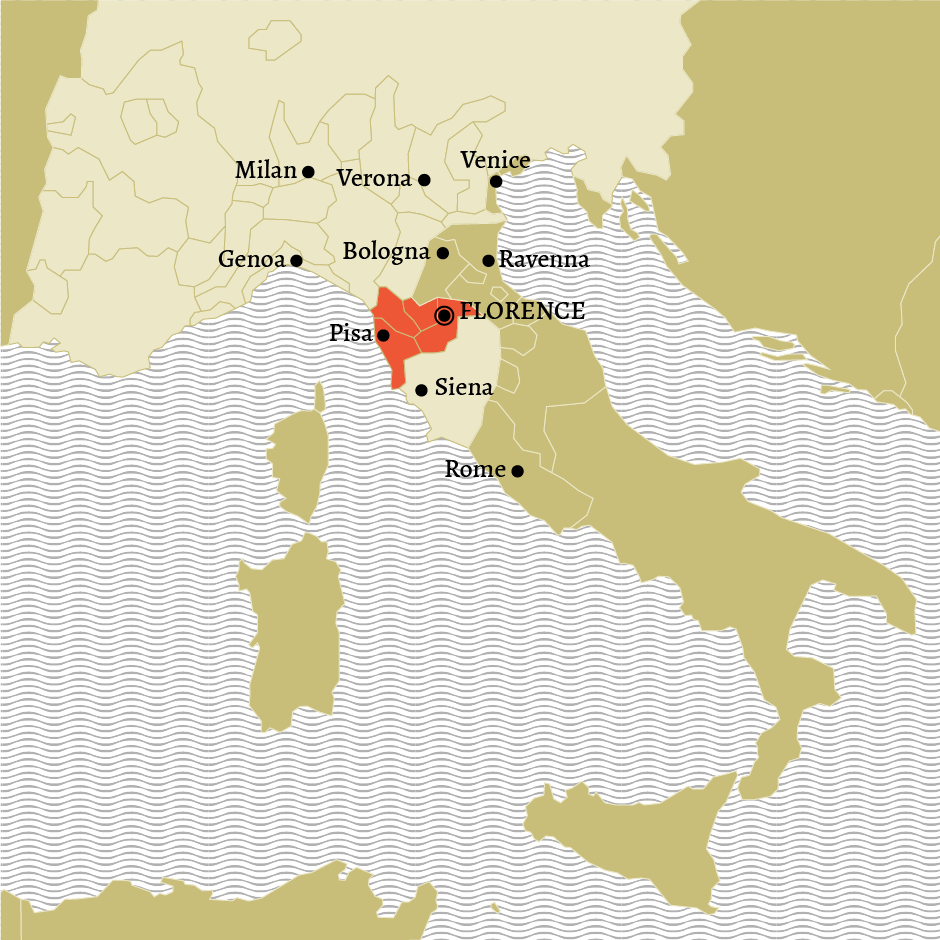
Map of Central Italy at the turn
of the 13–14th centuries
The Holy Roman Empire in the 13–14th centuries was a patchwork of small states and municipalities. Northern and Central Italy were part of the empire, but their wealthy city communes defended their independence and thus resembled states within a state.
During his years of exile, Dante traveled to many parts of Italy. He found temporary shelter in Verona with the Della Scala family, attended the coronation of Henry VII in Milan, undertook a diplomatic mission to Venice, and ended his days in Ravenna.
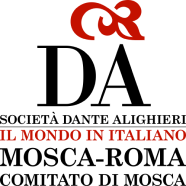

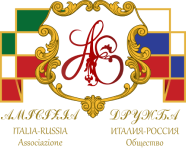

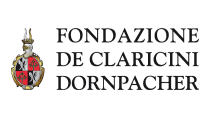
TASS would like to thank:
Secretary general of the Dante Alighieri Society in Rome Alessandro Masi, head of the Education Department of the Consulate General of Italy in Moscow and PRIA program director Giuseppe Lo Porto, head of the Dante Alighieri Society in Moscow Natalia Nikishkina, head of the Italy-Russia Friendship International Youth Society Ekaterina Spirova, head of the public relations department Zaza Zurabashvili, president of the Claricini Dornpacher Foundation Oldino Cernoia, head of the Falcone and Borsellino Italian Expatriates’ Association of the Moscow State Institute of International Relations Fabio Coacci, as well as professors Aldo Onorati, Eugenio Vender, Valerio De Luca, Gennaro Esposito, Stefano Milda, Egidio Lenti, Alessandro Salacone, and Anna Sabashnikova for their help in preparing the project.
La TASS desidera ringraziare:
Segretario Generale di Societa’ «Dante Alighieri» di Roma Alessandro Masi, Dirigente dell’Ufficio Istruzione presso Consolato Generale d’Italia a Mosca-Programma PRIA Giuseppe Lo Porto, Presidente di Societa’ «Dante Alighieri» di Mosca Nataliya Nikishkina, Presidente dell’ Associazione Internazionale «AMICIZIA» Italia-Russia Spirova Ekaterina, Responsabile delle Pubbliche Relazioni Zaza Zurabashvilli, Presidente Fondazione de Claricini Dornpacher Oldino Cernoia, Presidente dell’Associazione degli student Italiani di MGIMO Falcone e Borsellino Fabio Coacci, professori: Aldo Onorati, Eugenio Vender, Valerio De Luca, Gennaro Esposito, Stefano Milda, Egidio Lenti, Alessandro Salacone e anche Anna Sabashnikova per assistenza nel lavoro su questo progetto.
Credits:
Project creator: Ksenia Bezvikonnaya
Authors and editors: Ksenia Bezvikonnaya, Sabina Vakhitova, Alisa Irisova,
Timur Fekhretdinov
Executive editor: Kristina Nedkova
Designer: Konstantin Kakovkin
Illustrator: Anastasia Zotova
Developers: Lucky Site (Svetlana Levliukh, Konstantin Bizin, Vasiliy Jurlov, Vitaliy Jukov, Ivan Evseev)
Project manager: Nikolay Vart
Producer: Konstantin Krasheninnikov
Translator: Thomas Hodson
The illustrations are an artistic
interpretation and do not claim to be
entirely historically accurate.
Sources:
- Alfie F. Dante's Tenzone with Forese Donati: The Reprehension of Vice, 2011.
- Bloom H. Bloom's Modern Critical Views: Dante Alighieri. Chelsea House Publications, 2004.
- Gardner E. G. Dante's Ten Heavens Hardcover: a study of the Paradiso. Kessinger Publishing LLC, 2010.
- DeVries K., Capponi N., Cowper M. Campaldino 1289: The battle that made Dante. Osprey Publishing, 2018.
- Howe K. Dante’s Beatrice: The Nine and the Ten. Italica, 1975.
- Lansing R. The Dante Encyclopedia. London and New York: Taylor & Francis Group, 2010.
- Rocke M. Forbidden Friendships: Homosexuality and Male Culture in Renaissance Florence. Oxford: Oxford University Press, 1996.
- Santagata M. Dante: The story of his life / Translated by Dixon R. Cambridge (Mass.): Harvard University Press, 2016.
- Auerbach E. Dante: Poet of the Secular World. / Trans. from German by G.V. Vdovina. Moscow: Russian Political Encyclopedia, 2004.
- Batkin L.M. Dante and His Time. Poet and Politics. Moscow: Nauka Publishing House, 1965.
- Vatson M. V. Dante. His Life and Literary Activity: Biographical Sketch by M.V. Vatson, 1890.
- Garin I. I. Dante. Kharkov: Garinizdat Publishing House, 1994.
- Golenishchev-Kutuzov I. N. Dante / Series: Lives of Remarkable People. Moscow: Molodaya Gvardia Publishing House, 1967.
- Golenishchev-Kutuzov I. N. Dante’s Oeuvre and World Culture. Moscow, 1971.
- Dante Alighieri. The Divine Comedy: in 3 volumes / Trans. from Italian by M. Lozinsky. Moscow: Khudozhestvennaya Literatura Publishing House, 1974.
- Dante Alighieri. The Divine Comedy / Trans. by H. W. Longfellow. Boston: Ticknor and Fields, 1867.
- Dante Alighieri. Minor Works. Moscow: Nauka Publishing House, 1968.
- Dzhivelegov A.K. Dante Alighieri: Life and Works. Moscow, 1946.
- Dobrokhotov A.L. Dante Alighieri. Moscow: Mysl Publishing House, 1990.
- Dobrokhotov A.L. Philosophy of Culture. Moscow: HSE Publishing House, 2016.
- Gergey E. A History of the Papacy / Trans. from Hungarian. Moscow: Respublika Publishing House, 1996.
- A History of Italian Literature: in 4 volumes. Vol. 1: The Middle Ages / Ed. by M. L. Andreev, R. I. Khlodovsky. Moscow: Gorky Institute of World Literature, Russian Academy of Sciences, Nasledie Publishing House, 2000.
- Kurganov F. A. The Struggle of Pope Boniface VIII with King Philip IV “le Bel” of France: Speech by F. Kurganov at a conference of the Kazan Theological Academy on Nov. 8, 1882; Kazan: Imperial University Printing House, 1882.
- Le Goff J. The Birth of Purgatory. / Trans. from French by V. Babintsev and T. Kraeva. Yekaterinburg: U-Faktoria Publishing House; Moscow: AST Publishing House, 2009.
- Machiavelli N. Florentine Histories / Trans. from Italian by N.Ya. Rykova. Moscow: Nauka Publishing House, 1987.
- Merezhkovsky D.S. Dante. Moscow: Eksmo Publishing House, 2005.
- Sizova E. A. Frederick II Hohenstaufen and His Dynasty in the Mirror of Literature: Monograph. Moscow: Direct-Media Publishing House, 2011.
- Website of the Enciclopedia Italiana
- Website of the Vsemirnaya Istoria (World History) Encyclopedia
- Website of the Krugosvet (Round-the-World) Encyclopedia
- Website of the Dante Alighieri Society
- Brockhaus and Efron Encyclopedic Dictionary
- Digital Dante
© TASS, 2020
TASS News Agency (Media Registration Certificate No. 03247 issued April 2, 1999, by the State Press Committee of
the Russian Federation). The website may contain information not suitable for readers under the age of 16.















